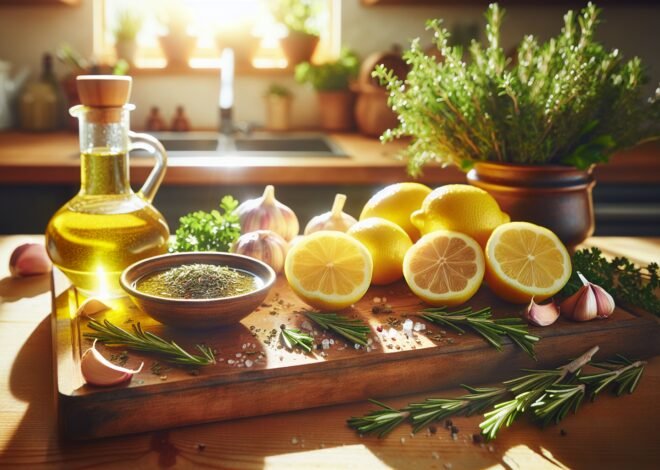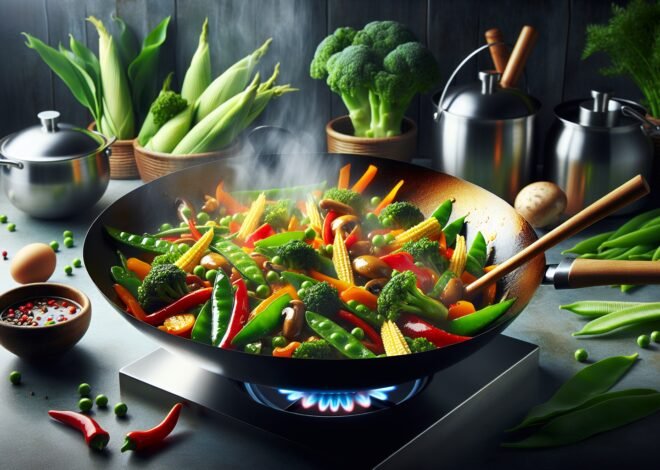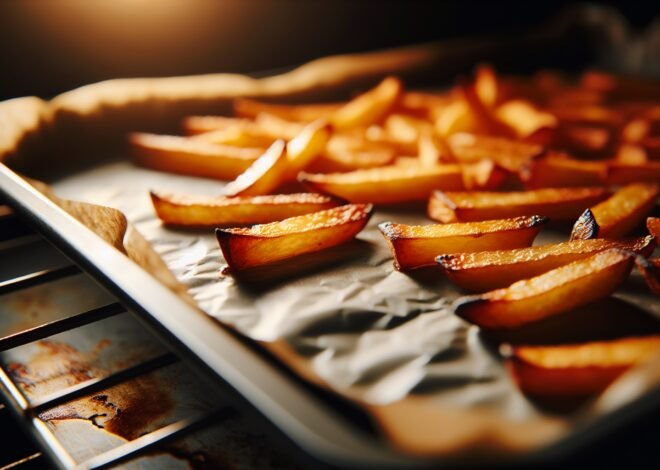
How to Properly Chop Fresh Herbs for Maximum Flavor
Chop fresh herbs with precision to enhance the flavor and aroma of your dishes. Did you know that incorrect chopping techniques can cause herbs to lose vital oils, diminishing your meal’s taste? This guide reveals essential tips for slicing, dicing, and maximizing the flavor impact of fresh herbs in your recipes. Discover the right tools for the job, the best methods to preserve flavor, and techniques to ensure freshness. Elevate your cooking by mastering the art of properly chopping fresh herbs.
The Importance of Chopping Herbs for Enhanced Flavor
Chopping herbs isn’t just a culinary chore; it’s an art that elevates your dish’s flavor profile. Properly chopped herbs can transform a meal, releasing essential oils that add depth and aroma. Understanding how to chop herbs effectively is key to unlocking their full potential.
Understanding the Role of Herbs in Cooking
Herbs are nature’s flavor amplifiers. They contribute to the taste, aroma, and even the color of food. Whether you’re using basil in Italian dishes or cilantro in Mexican recipes, herbs are integral to creating authentic flavors. They aren’t just garnishes; they’re the backbone of many cuisines. When used correctly, herbs can enhance the overall dining experience, bringing a burst of freshness and complexity to any dish.
Benefits of Properly Chopped Fresh Herbs
Properly chopped herbs release more flavor than whole or roughly cut ones. Chopping increases the surface area, allowing essential oils to infuse into the dish. This ensures that every bite is packed with flavor. Freshly chopped herbs also retain more of their nutrients compared to dried ones. They add not just taste but also visual appeal, making your dishes more attractive and appetizing.
Common Mistakes When Chopping Herbs
One common mistake is using the wrong knife, leading to bruising rather than clean cuts. Another is chopping too early, which can cause the herbs to lose their freshness and flavor. Avoid over-chopping, which turns herbs into a mushy paste, diminishing their taste and texture. Proper technique and timing are crucial for maintaining the integrity of the herbs.
Essential Tools and Techniques for Chopping Fresh Herbs
Having the right tools and mastering the techniques are essential for effectively chopping herbs. The tools you choose can make the difference between a dish that’s good and one that’s exceptional. Learn about knives, boards, and specific chopping methods to enhance your culinary skills.
Selecting the Right Knives for Herb Chopping
A sharp chef’s knife is ideal for most herbs, providing control and precision. For more delicate herbs, consider using a paring knife. The key is sharpness; a dull knife can crush the herbs, causing them to lose flavor. Some chefs prefer a mezzaluna for its rocking motion, which is excellent for finely chopping herbs.
How to Use a Cutting Board Effectively
Your cutting board should be stable and non-slip to ensure safety and efficiency. Plastic boards are easy to clean and ideal for herbs, while wooden boards offer a traditional feel but require more maintenance. Ensure your board is clean to prevent contamination, and use a designated board for herbs to keep flavors pure.
Techniques for Chopping Different Types of Herbs
Different herbs require different chopping techniques. For leafy herbs like basil, stack the leaves, roll them, and slice thinly. This technique is known as chiffonade. For herbs like parsley or cilantro, gather them into a tight bunch and chop with a rocking motion. Woody herbs, such as rosemary, need to be stripped from their stems before chopping.
Step-by-Step Guide to Chopping Fresh Herbs Perfectly
Perfecting the art of herb chopping involves practice and precision. This guide provides step-by-step instructions to help you achieve the perfect chop every time. From preparation to storage, learn the secrets to maximizing flavor and freshness in your culinary creations.
Preparing Your Herbs for Optimal Chopping
Start by washing your herbs thoroughly to remove any dirt or pesticides. Pat them dry with a paper towel or use a salad spinner to ensure they’re completely dry. Remove any tough stems, especially for herbs like parsley and cilantro. This preparation step is crucial for a clean chop that enhances flavor.
Chopping Techniques for Maximum Flavor Release
Begin with a sharp knife to avoid crushing the herbs. Use a gentle rocking motion to chop, allowing the knife to do the work. For leafy herbs, aim for thin strips or a fine chop, depending on your recipe. The goal is to release as much of the essential oils as possible without bruising the herbs.
Tips for Storing Chopped Herbs to Preserve Freshness
Once chopped, store herbs in an airtight container in the refrigerator. Adding a damp paper towel can help retain moisture. If you have excess herbs, consider freezing them in ice cube trays with a little water or olive oil. This method preserves flavor and makes it easy to add herbs to future dishes.
Conclusion
Chopping fresh herbs enhances their flavor and aroma in dishes. Use a sharp knife to prevent bruising the herbs and keep them fresh longer. Gather herbs into a tight bundle for more precise cutting. Chop with a rocking motion to maintain control and achieve even pieces. Store chopped herbs in a sealed container in the refrigerator for short-term use.
FAQ
What are the best techniques for chopping fresh herbs efficiently?
Use a sharp knife to ensure clean cuts and minimize bruising. Gather herbs into a tight bunch, then use a rocking motion to chop. A cutting board with a damp towel underneath can prevent slipping.
How can I keep fresh herbs from bruising while chopping?
Avoid using dull knives as they crush rather than cut. Chop gently and handle herbs with care. A mezzaluna can also reduce bruising by providing a smooth, rocking motion.
Is there a difference in flavor when herbs are chopped versus torn?
Chopping releases more oils, resulting in a stronger flavor. Tearing is gentler, preserving a more subtle taste. Choose based on the desired intensity of flavor in your dish.
What equipment do I need for chopping fresh herbs properly?
Essential tools include a sharp chef’s knife and a sturdy cutting board. Some cooks prefer a mezzaluna for its ease of chopping. Kitchen shears can also be helpful for delicate herbs.
How should I store chopped fresh herbs to maintain their freshness?
Place chopped herbs in an airtight container in the refrigerator. Adding a damp paper towel can help retain moisture. Use within a few days for best results.
Can I freeze chopped fresh herbs for later use?
Freezing is possible, often in ice cube trays with water or olive oil. This method preserves flavor and allows portion control. Herbs may lose some texture but remain flavorful.











